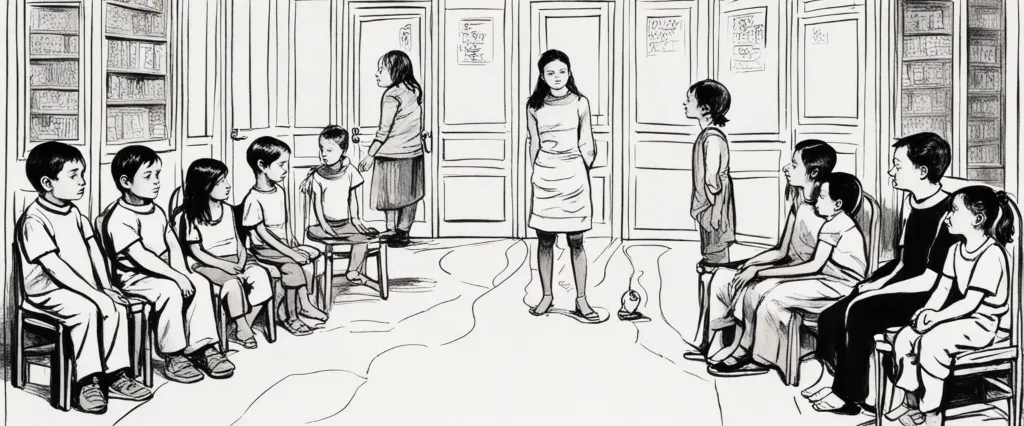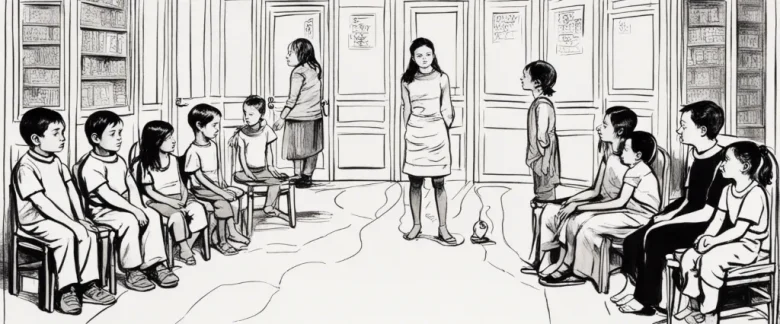
In “No-Drama Discipline,” Daniel J. Siegel explores a groundbreaking approach to discipline that emphasizes connection and communication with our children, rather than relying on traditional punitive methods. Offering practical strategies and insightful stories, Siegel guides us on a journey to reconnect with our kids, helping them develop emotional intelligence and fostering stronger parent-child relationships.
Daniel J. Siegel is a renowned clinical psychiatrist, educator, and bestselling author specializing in the field of interpersonal neurobiology. With his extensive knowledge and experience, Siegel has revolutionized the way we understand the human mind and its impact on relationships. His previous works, including “The Whole-Brain Child” and “Parenting from the Inside Out,” have helped countless parents and caregivers navigate the ups and downs of raising children. By integrating scientific research with engaging storytelling, Siegel provides accessible tools for transforming discipline into an opportunity for growth and connection.
Chapter 1: Understanding Discipline
Chapter 1 of “No-Drama Discipline” by Daniel J. Siegel provides an in-depth understanding of discipline and sheds light on how traditional methods may not be the most effective approach. The chapter focuses on the development of the child’s brain and emphasizes the importance of connection rather than punishment.
Siegel introduces the concept of discipline, noting its Latin origins which mean “to teach” rather than “to punish.” He asserts that discipline is about guiding children to learn and grow rather than merely implementing consequences for their actions. The author explains that discipline should aim to build strong and healthy connections between parents and children.
Siegel highlights the neurobiology of children’s brains and emphasizes that a child’s behavior is directly influenced by their brain development. He explains the concept of the lower (primitive) brain and the higher (decision-making) brain. According to the author, traditional discipline methods often trigger the lower brain, leading to reactive responses in children.
The chapter also emphasizes the concept of “flipping the lid,” where a child’s high emotional arousal can cause them to lose access to their higher brain, inhibiting their ability to process information and make rational decisions. Siegel suggests that disciplining children in this state is not effective and instead encourages parents to help children regain access to their higher brain through connection and emotional co-regulation.
In conclusion, Chapter 1 of “No-Drama Discipline” presents a paradigm shift in how discipline is perceived. It emphasizes that discipline is not about punishment, but about teaching and building connections with children. Understanding the brain’s development and creating a safe environment for emotional co-regulation are essential in guiding children towards better behavior.
Chapter 2: The Brain Science of Discipline
Chapter 2 of “No-Drama Discipline” by Daniel J. Siegel explores the brain science behind discipline and provides insights into how children’s brains work. The chapter begins by emphasizing the importance of understanding the brain to effectively discipline children without causing harm or unnecessary drama.
Siegel introduces the concept of the upstairs and downstairs brain. The upstairs brain, located in the prefrontal cortex, is responsible for reasoning, decision-making, and self-control. On the other hand, the downstairs brain, located in the primitive brainstem, controls survival instincts and emotional reactions. The author explains that when children are upset or misbehaving, their downstairs brain is activated, impairing their ability to access the upstairs brain and exhibit self-control.
The chapter focuses on the role of the caregiver in helping the child develop better self-regulation skills. Siegel encourages parents to respond to their child’s emotional outbursts with empathy and understanding. By connecting with their child’s emotions and validating their feelings, parents can help calm the child’s downstairs brain and initiate the integration of the upstairs and downstairs brain.
Siegel introduces the acronym “SIFT” as a helpful tool for caregivers. SIFT stands for “sensations, images, feelings, and thoughts” and suggests that parents should sensitively inquire about their child’s experience during a challenging situation. By engaging in a reflective conversation, parents can encourage the child to process their emotions and activate their upstairs brain, which helps them develop better self-control and problem-solving abilities.
In conclusion, Chapter 2 highlights the significance of understanding the brain in discipline practices. Parents are encouraged to approach discipline with empathy, connection, and an emphasis on promoting the child’s brain integration for optimal emotional and behavioral development.
Chapter 3: Connect and Redirect
In Chapter 3 of “No-Drama Discipline” by Daniel J. Siegel, the focus is on learning how to connect with your child and redirect their behavior effectively. The chapter emphasizes the importance of building a strong connection with your child to create a safe and trusting relationship.
The chapter begins by introducing the concept of empathy and its powerful role in parenting. Siegel explains that understanding and acknowledging your child’s emotions can help them feel seen and understood, leading to a better opportunity for growth and learning. Instead of dismissing or minimizing their feelings, parents are encouraged to connect with their child by getting on their level and offering comfort and validation.
Next, the chapter dives into the importance of redirecting your child’s behavior rather than punishing it. The goal is to guide them towards making better choices and understanding the consequences of their actions. Siegel explains that redirecting requires understanding the underlying reasons for their behavior, such as unmet needs or emotional dysregulation.
The chapter provides practical strategies for redirecting, such as offering choices, using logic and reasoning, and setting limits with empathy and respect. It also emphasizes the need for parents to regulate their own emotions before engaging with their child to prevent escalating situations.
Lastly, the chapter highlights the significance of teaching self-discipline to children. Rather than relying on external discipline methods, parents are encouraged to help their children develop an inner sense of self-control and responsibility. This involves setting clear expectations, modeling desired behaviors, and nurturing their child’s developing brain.
In summary, Chapter 3 discusses the importance of connecting with your child through empathy and redirecting their behavior with understanding and respect. By building a strong relationship and teaching self-discipline, parents can create a nurturing environment that fosters growth and learning.
Chapter 4: Discipline Mistakes to Avoid

Chapter 4 of the book “No-Drama Discipline” by Daniel J. Siegel explores various discipline mistakes that parents often make and provides practical advice on how to avoid these errors. The chapter emphasizes the importance of understanding and connecting with children during discipline to foster a healthy parent-child relationship.
Siegel starts by highlighting the mistake of overreacting to misbehavior. He suggests that parents should remain calm and focused rather than responding impulsively with punishment. Instead, they should take a moment to understand the underlying reasons behind the behavior and use discipline as an opportunity for growth and learning.
Another mistake Siegel focuses on is the lack of consistency in discipline. He stresses that parents need to establish consistent boundaries and expectations, as inconsistency can confuse children and lead to an increase in challenging behaviors.
The author also highlights the error of being overly punitive or using harsh discipline techniques. Instead, he encourages parents to utilize effective and respectful discipline strategies that teach the child self-control and accountability. He suggests using consequences that are logical, natural, and relevant to the behavior to help children understand their actions and take responsibility for them.
Next, Siegel discusses the mistake of neglecting self-discipline as parents. He emphasizes the importance of parents modeling self-control and emotional regulation as children learn best by observing and imitating their parents’ behavior.
Lastly, the chapter tackles the error of not taking into account the developmental stage and temperament of the child while disciplining. Siegel discusses the significance of understanding a child’s unique characteristics and adapting discipline strategies accordingly to meet their individual needs.
In summary, Chapter 4 of “No-Drama Discipline” highlights common discipline mistakes parents make and offers guidance on avoiding these errors. By approaching discipline with empathy, consistency, respect, self-discipline, and considering the child’s individuality, parents can foster a nurturing and growth-oriented environment for their children.
Chapter 5: Emotion Coaching and Regulation
Chapter 5 of the book “No-Drama Discipline” by Daniel J. Siegel focuses on the concept of emotion coaching and regulation. Emotion coaching refers to the process through which parents or caregivers help children understand and manage their emotions effectively. The chapter explores the importance of emotional regulation for both children and adults and provides guidance on how to become an effective emotion coach.
Siegel emphasizes that children’s ability to regulate their emotions is crucial for their overall well-being and social development. He explains that emotion coaching involves parents or caregivers providing a safe and nurturing environment for children to express and understand their feelings. By acknowledging and validating their emotions, adults can help children feel understood and supported.
The chapter also highlights the five steps of emotion coaching that parents can follow. First, it involves becoming aware of the child’s emotions and recognizing their significance. Second, it requires seeing emotions as an opportunity for connection and teaching, rather than as a problem to be fixed. Third, it entails listening empathetically and validating the child’s emotions. Fourth, it involves helping children label their emotions to enhance their understanding. Lastly, it focuses on setting limits and problem-solving to assist children in effectively managing their emotions.
The author emphasizes that emotion coaching helps children develop emotional intelligence, which is essential for healthy relationships and a positive sense of self. It also plays a vital role in reducing challenging behaviors and improving self-regulation skills. Additionally, adults who practice emotion coaching not only support the emotional growth of their children but also enhance their own emotional regulation abilities.
In conclusion, Chapter 5 of “No-Drama Discipline” introduces the concept of emotion coaching as a vital tool for parents and caregivers to help children regulate their emotions effectively. By following the steps of emotion coaching, adults can create a nurturing environment and support children’s emotional well-being.
Chapter 6: Teaching Empathy and Perspective-Taking
Chapter 6 of the book “No-Drama Discipline” by Daniel J. Siegel focuses on teaching empathy and perspective-taking, essential skills for fostering healthy communication and understanding in parent-child relationships.
The chapter begins by explaining that empathy is the ability to understand and share the feelings of another person, while perspective-taking refers to the capacity to step into someone else’s shoes and see the world from their point of view. These skills lay the foundation for meaningful connections and effective discipline.
Siegel emphasizes that empathy and perspective-taking can be taught and developed through various practices, such as “mind-sight mapping” and “culture of empathy.” Mind-sight mapping involves encouraging children to reflect on their emotions and thoughts, helping them recognize and label their experiences. This process facilitates self-awareness and empathy towards others. Creating a culture of empathy involves consistently modeling empathy and emotional regulation as parents. Demonstrating these qualities in everyday interactions helps children internalize these skills.
The chapter also highlights the importance of understanding the root causes of a child’s behavior before responding with discipline. By practicing perspective-taking, parents can identify the underlying emotions, needs, and motivations that drive their child’s actions. This understanding allows parents to respond with empathy and problem-solving approaches rather than punitive measures.
Siegel offers practical strategies for teaching empathy and perspective-taking, including validating emotions, active listening, helping children imagine the feelings of others, and encouraging problem-solving discussions. These approaches enable parents to nurture their child’s empathic capacities and promote positive social interactions.
In summary, Chapter 6 of “No-Drama Discipline” emphasizes the significance of teaching empathy and perspective-taking as foundational skills for healthy parent-child relationships. By practicing empathy, understanding the roots of behavior, and employing specific strategies, parents can cultivate these qualities in their children and create a more empathic and connected family dynamic.
Chapter 7: Repairing and Rebuilding Trust
Chapter 7 of “No-Drama Discipline” by Daniel J. Siegel is titled “Repairing and Rebuilding Trust” and focuses on strategies for repairing trust in parent-child relationships when it has been damaged by conflict or mistakes.
The chapter begins by highlighting the importance of establishing a foundation of trust with our children and how this affects their emotional well-being and overall development. It explains that trust can be eroded by negative interactions, misunderstandings, or even well-intentioned mistakes. However, parents can repair and rebuild trust by following certain steps.
The chapter introduces the concept of the Repair Checklist, which provides a framework for parents to guide them through the process. The checklist includes steps such as recognizing and responding to feelings, reflection on the situation, taking responsibility, and offering repair.
Siegel emphasizes the significance of attunement – the ability to be present and connected with our children’s experiences and emotions. Attunement enables parents to understand the impact of their actions on their children and helps in repairing trust. He encourages parents to actively listen to their children’s feelings and validate them, as this helps children feel heard and understood.
The chapter also explores how repairing trust involves reflecting upon the situation and acknowledging one’s mistakes. By taking responsibility for their actions, parents model accountability and integrity, enhancing trust within the parent-child relationship. Siegel advises against deflecting or dismissing a child’s feelings or experiences, as it can further damage trust.
Lastly, the chapter emphasizes the importance of offering repair, which involves apologizing and making amends. Parents should demonstrate genuine remorse, seek forgiveness, and work collaboratively with their children to find solutions and prevent future similar incidents from occurring.
Overall, Chapter 7 of “No-Drama Discipline” provides parents with practical strategies for repairing and rebuilding trust with their children, fostering a strong foundation of trust that supports positive development and resilient relationships.

Chapter 8: Discipline as a Path to Growth
Chapter 8 of “No-Drama Discipline” by Daniel J. Siegel explores the concept that discipline can be a powerful tool for growth and connection when approached in a mindful and positive manner. The chapter emphasizes how discipline should aim to teach and guide children rather than focus solely on punishment.
Siegel introduces the four components of discipline: guidance, structure, teaching, and connection. He explains that effective discipline involves providing clear guidance and expectations, setting up a structured environment, teaching children new skills and problem-solving techniques, and nurturing the parent-child connection.
The chapter highlights the importance of understanding the development and needs of children at different ages. It encourages parents to recognize that discipline needs to be tailored to a child’s stage of development, considering their capabilities and limitations. By understanding children’s perspectives, parents can find ways to connect with them and help them grow, rather than just focusing on correction.
Emphasizing the significance of connection, Siegel explains that discipline should strengthen the relationship between parent and child. He encourages parents to approach discipline as an opportunity to understand their child’s emotions, needs, and intentions. By remaining calm and empathetic, parents can help their children develop emotional intelligence and self-control.
In this chapter, Siegel also discusses the use of time-ins, a strategy that allows parents to connect with their children during challenging moments. Rather than isolating or punishing, time-ins provide an opportunity for communication and understanding.
Ultimately, Chapter 8 of “No-Drama Discipline” promotes a perspective that discipline can be a valuable tool for growth and connection when approached with mindfulness, empathy, and a focus on teaching rather than punishment.
After Reading
In conclusion, “No-Drama Discipline” by Daniel J. Siegel offers a valuable framework for parents and caregivers to help children develop healthier emotional regulation and behavior. The book emphasizes the importance of understanding a child’s perspective and employing empathetic and respectful discipline techniques. Siegel highlights the significance of connection, communication, and conscious choices in promoting positive discipline. By providing practical strategies and insightful case studies, the book empowers readers to create a nurturing and supportive environment for their children to grow and thrive. “No-Drama Discipline” serves as a valuable resource for anyone seeking to enhance their parenting skills and build strong, loving relationships with their children.
1. The Power of Now” by Eckhart Tolle – In this transformative book, Tolle takes readers on a spiritual journey to help them understand the importance of living in the present moment and finding peace in the midst of daily chaos.
2. The Alchemist” by Paulo Coelho – This inspiring novel follows the story of a young shepherd who embarks on a journey to discover his personal legend, teaching readers powerful life lessons about following their dreams, resilience, and finding the true meaning of life.
3. Educated” by Tara Westover – This memoir recounts the incredible and inspiring story of Tara Westover, who grew up in a strict and abusive household in rural Idaho. Against all odds, she managed to escape and eventually earn a PhD from Cambridge University, providing a powerful testament to the transformative power of education and determination.
4. Man’s Search for Meaning” by Viktor E. Frankl – Based on Viktor Frankl’s personal experiences as a Holocaust survivor, this renowned book explores the search for meaning and purpose in life. By emphasizing the importance of finding personal meaning, Frankl offers insights that can help readers navigate even the most challenging circumstances.
5. The Four Agreements” by Don Miguel Ruiz – This spiritual guide draws on ancient Toltec wisdom to present a practical and profound approach to living a happy and fulfilling life. The Four Agreements provide a code of conduct that encourages personal freedom, self-mastery, and the ability to create positive change.



